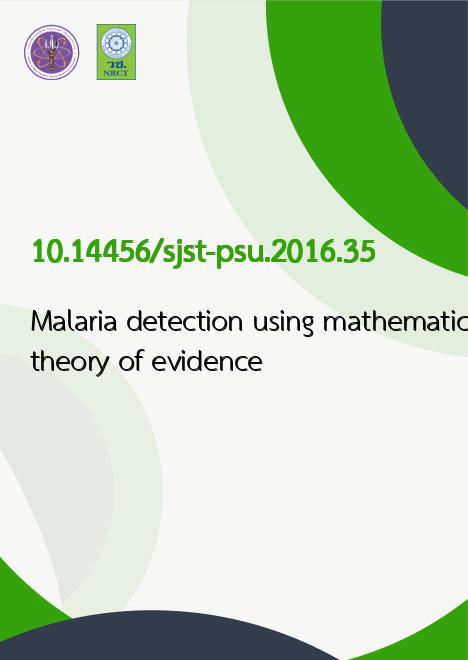
|
Malaria detection using mathematical theory of evidence |
|---|---|
| รหัสดีโอไอ | |
| Creator | 1. Andino Maseleno 2. Glenn Hardaker |
| Title | Malaria detection using mathematical theory of evidence |
| Publisher | Research and Development Office, Prince of Songkla University |
| Publication Year | 2559 |
| Journal Title | Songklanakarin Journal of Science and Technology (SJST) |
| Journal Vol. | 38 |
| Journal No. | 3 |
| Page no. | 257-263 |
| Keyword | malaria,disease detection,theory of evidence |
| ISSN | 0125-3399 |
| Abstract | Malaria is still one of the most common infectious diseases in the world and one of the greatest global public healthproblems in many parts of the world. The existing methods used to detect malaria are complicated, an extremely timeconsumingprocess, and can only be performed under laboratory conditions, often require highly trained lab workers andtime-intensive procedures, as well as a highly sterile experimental environment. This research is an assessment on the effectivenessof Dempster-Shafer's mathematical theory of evidence. Six different conditions of malaria detection are proposed. Theresult reveals that malaria detection using Dempster-Shafer theory obtained degrees of belief of 88% for condition 1, 82% forcondition 2, 80% for condition 3, 92% for condition 4, 97% for condition 5, and 98.6% for condition 6. |
